The Law of Balance: Truth, Power, and the Hidden Third Force
Egyptian Systems Theory and the Threefold Nature of Truth
What could possibly go wrong in a society that encourages us to constantly strive, to ‘smash it’, to ‘crush it’, and to endlessly compete? A society that celebrates people with a chronic hoarding addiction (aka billionaires) as leading lights, worshipping those ‘winning’ the game as the ideal to aspire to?
Well, plenty, because this is not how Nature actually works on a macro level. There is great wisdom in the ways of Nature that world events are compelling us to remember.
The fundamental problem is that our society tells us that humanity is in competition with nature. We consider nature as something to be ‘conquered’ rather than what it really is: our only life-support system in outer space.
So how else could we look to Nature for guidance on how we could live better lives collectively and as individuals on planet Earth?
Truth Unites Opposites
Through Pesedjet Ninefold Wisdom we’re using ancient Egyptian wisdom as a catalyst to provide better answers for how to live today. And so it is with the Law of Balance, which was central to the ancient Egyptian worldview in the form of Ma’at (it’s pronounced with a glottal stop between the two ‘a’s).
Ma’at simply means truth in the form of balance, harmony, order, justice, integrity, or law. As such, ma'at was seen as central to Egyptian philosophy because it was considered the foundational principle of the Universe and of every system within it. The ultimate role of the Pharaoh was to uphold ma’at in the form of environmental and social stability.
Many civilisations, more intelligent than ours, understood the essential need to respect the natural order to maintain a stable system in which to live. By contrast, our own economic system, which has destabilised six out of nine planetary boundaries1 required for the healthy functioning of planet Earth, is dangerously foolhardy.
We could rightly call ma’at ancient Egyptian systems theory. Ma’at represents a Universal truth: that every system seeks dynamic equilibrium within a larger unified whole. Balance was understood as the fundamental organising principle of Nature; it is the law that holds the universe together.
As Egyptologist Lucie Lamy puts it, balance in the form of ma’at is the very medium we live in:
“Divine entities and human beings alike live 'by Ma'at, in Ma'at and for Ma'at'“.2
Ma’at can also be interpreted as ‘equation’. In fact there’s a strong probability that ma’at is the origin of the Greek word máthēma3, the origin of our word ‘mathematics’ – or ma’athematics – the balancing of equations.
So the Law of Balance is an unalterable law of the Universe. Nature seeks balance. Our body seeks homeostasis, and our psyche seeks equilibrium. The mind-body system seeks balance in the form of ethical and integrated self-expression, and so it is that positive emotions are connected to a state of ma’at. Feelings of anger, fear and shame arise when something within us is out of alignment and seeking balance.
Through the concept of ma’at the Egyptians offer us a universal truth that is just as relevant now as it ever was.
Balance and the Enneagram Law of Three
Ma’at, or balance, was such a central concept in ancient Egypt that the hieroglyphic spelling was often shortened to just one or two signs. It’s only when we look at the long-form spelling4 that we discover something revealing: the three vertical strokes, representing the number three, show that the Egyptian concept of ma’at was threefold in nature.
Once again, it’s by returning to the original Egyptian that we uncover the depth of their philosophical brilliance in the form of wisdom that remains deeply practical even today. The image of weighing scales, so often seen in Egyptian scenes of the Weighing of the Heart ceremony, perfectly symbolises the Law of Balance. In this ritual, the heart of the deceased was weighed against the feather of Ma’at to determine how true, just, or uncorrupted a person had been in their life. Imagine the benefits of living in a society that placed such a taboo on corruption.
Pythagoras, who studied in the Egyptian mystery schools, taught that ‘all things consist of three’. As Manly P. Hall recounts, Pythagoras believed that everything in Nature could be divided into three parts, and that no one could become truly wise without learning to see every problem as triangular. ‘Establish the triangle,’ Pythagoras said, ‘and the problem is two-thirds solved.’5
The symbolism of the scales and the triangle reflect what Gurdjieff later described as the Law of Three, another expression of the Law of Balance. It states that every phenomenon arises from the interaction of three forces:
Affirming - the initiating force which sets things in motion or brings the impulse to act.
Denying - the resisting force which meets the impulse with friction, limits, or opposition.
Reconciling - the unifying force which mediates the tension between opposites and serves as the locus of power within the system.
While we are usually aware of the Affirming and Denying forces, the Reconciling force often remains invisible. Yet it is this third force that holds the central power within the system.
While we have two eyes to see, it is when we combine the images of both sides together that we gain the power of perspective. When we can lift ourselves out of the trenches of polarised thinking, we begin to ‘rise above’, gaining power over challenges by seeing problems for what they really are. (And intriguingly, the Egyptian word ma’a means ‘to see’.)
Bonus Practice:
Whenever you’re feeling stuck or facing a problem, ‘establish the triangle’ and ask yourself:
“What’s the invisible third force I’m not seeing?”
Then reflect, and notice how your perspective begins to shift.
The Enneagram of Balance
If the guiding principle of any system is balance, then this must also apply to the Enneagram, and of course it does. To seek equilibrium is the whole message of the enneagram symbol, with Point 9 as the balance point, the very reason for being of the system. Vertically, Point 9 is the highest point; on the horizontal plane, it’s the only point that is placed centrally. It is the locus from which all other points ‘hang’.
Point 9’s symbolic position is matched by its meaning in Enneagram theory, where it is associated with harmony, balance, unification, stability, diplomacy, and, crucially, power.6 But the power at Point 9 is not power over, it’s power with – this is an enabling concept of power that runs counter to the values of Western society. Notice how the French symbolist René Schwaller de Lubicz combines the ideas of power and mystical invisibility when he writes:
Harmony is the a priori law written in all of Nature; it imposes itself on our intelligence, yet it is in itself incomprehensible.7
So ma’at sits at Point 9 of the Enneagram, defining the purpose of the whole system. Fittingly, Faulkner also translates ma’at as ‘right-doing’8, which corresponds to the higher personality quality of Right Action assigned to the Type 9 pattern. Whatever our dominant personality pattern, the enneagram is ultimately asking: Are we balanced in mind, body and soul? And if not, what action do we need to take to rebalance our system in this moment?
From the ancient Egyptians we learn that the goal of life is to live a life of balance, to maintain ma'at. And the way to do this is through ma’athematics – by consciously solving the equations that life presents us with, in a way that restores harmony and inner resonance.
This is the first of two posts. The next one, Out of Balance, Out of Time, explores how the Law of Balance applies in today’s world.
Defined by the Stockholm Resilience Centre at Stockholm University: https://www.stockholmresilience.org/research/planetary-boundaries.html
Lucie Lamy, Egyptian Mysteries: New light on ancient knowledge
By Pythagorean reduction, the numbers assigned to the Greek letters that spell the word máthēma – μάθημα – reduce to nine. The sum is 40 + 1 + 9 + 8 + 40 + 1 = 99, then 9 + 9 = 18, then 1 + 8 = 9.
R.O. Faulkner, A Concise Dictionary of Middle Egyptian
Manly P. Hall, The Secret Teachings of All Ages
Riso and Hudson Levels of Development, The Wisdom of the Enneagram
René Schwaller de Lubicz, Sacred Science
R.O. Faulkner, A Concise Dictionary of Middle Egyptian

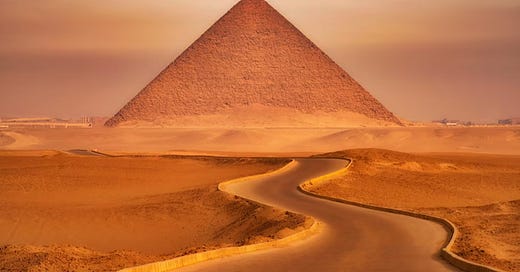


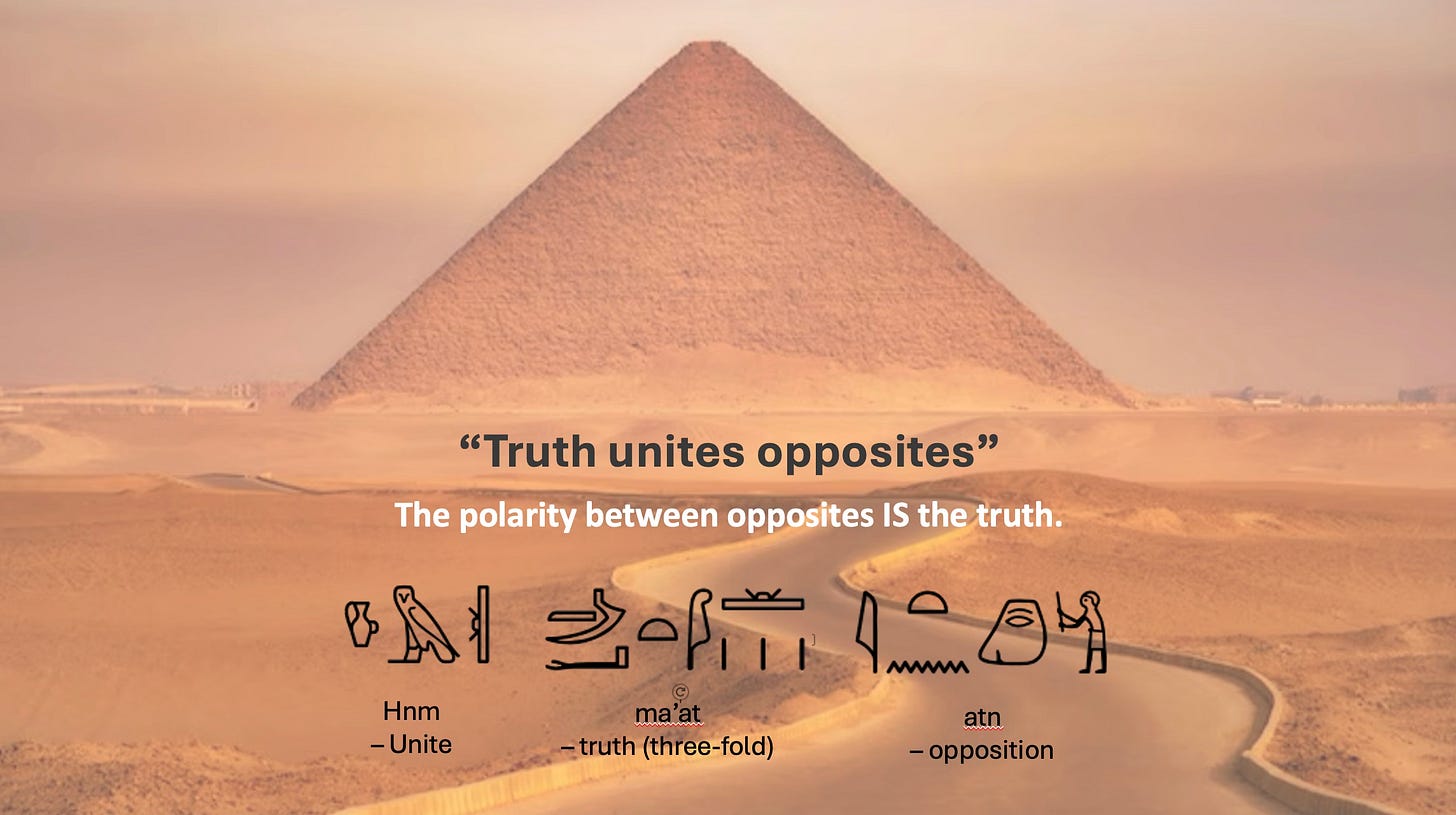
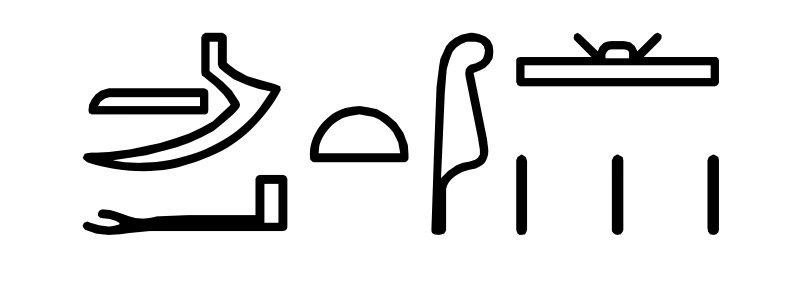
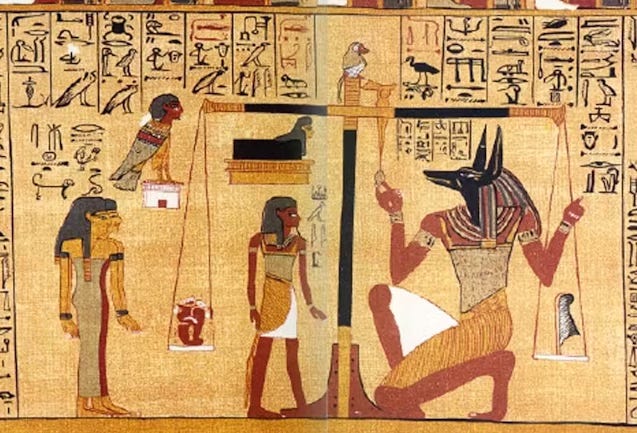
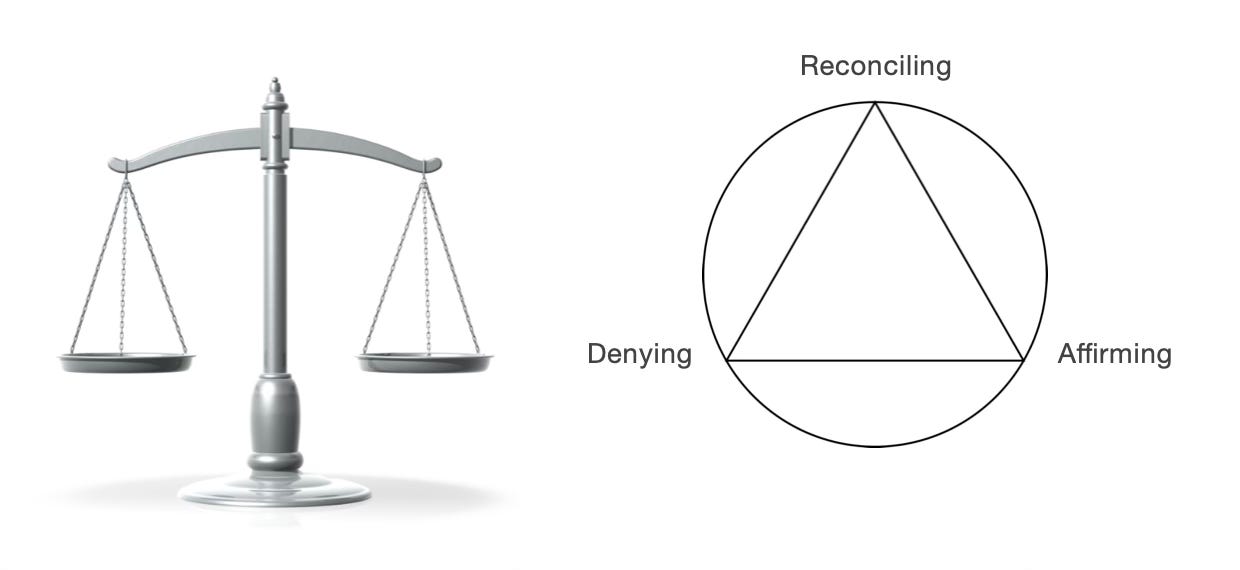
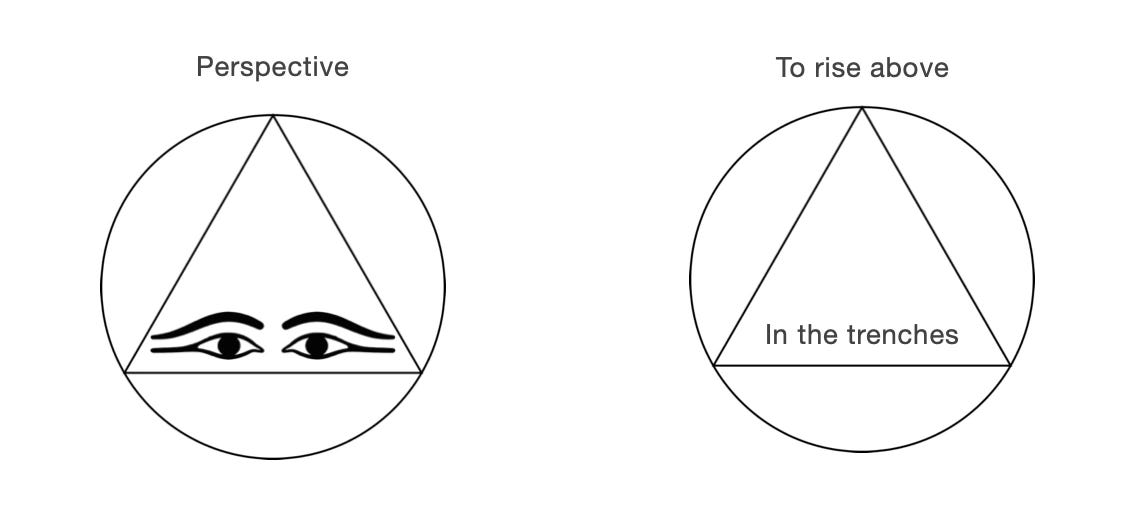

Interesting thank you. 'While we have two eyes': thinking of the Third eye, to rise above...
AWESOME.
favourite part:
"The fundamental problem is that our society tells us that humanity is in competition with nature. We consider nature as something to be ‘conquered’ rather than what it really is: our only life-support system in outer space."